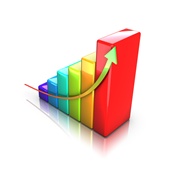 The Prime Minister's economic panel on Tuesday said it could revise upward the economic growth forecast to 7 per cent from 6.5 per cent for the current fiscal on the back of robust economic growth in the second quarter.
The Prime Minister's economic panel on Tuesday said it could revise upward the economic growth forecast to 7 per cent from 6.5 per cent for the current fiscal on the back of robust economic growth in the second quarter.
"We had earlier estimated it (growth) at 6.5 per cent, but probably it will be higher than that... it could be 7 per cent," the Prime Minister's Economic Advisory Council Chairman, C Rangarajan, told reporters on the sidelines of the Sixth Sir John Crawford Lecture where he was the chief guest.
Asked when the Council would revise its projection, he said, "We brought out the outlook only in October. So we probably will do it in January."
Belying economists and analysts' predictions, the economy grew by a significant 7.9 per cent in the second quarter of this fiscal, up from 6.1 per cent in the previous quarter, and even 7.7 per cent in the July-September quarter in 2008, essentially due to a good showing by the industry and services.
The economy has grown by 7 per cent in the first half of the current fiscal.
In the last fiscal, India's economic growth rate fell to 6.7 per cent after registering growth of 9 per cent in the three preceding years. Rangarajan said the council needs to see the impact of decline in agricultural products.
"...the latest numbers do indicate that the industry and services area are growing strongly. This could offset the impact of decline in agricultural production," Rangarajan said.
Agriculture rose by 0.9 per cent, against expectations of contraction in the second quarter.
The manufacturing sector grew by 9.2 per cent compared to 5.1 per cent in the corresponding period of last fiscal and mining and quarrying by 9.5 per cent versus 3.7 per cent recorded in FY09.
Community, social and personal services expanded by double digit at 12.7 per cent against nine per cent.
Rangarajan said that he expected no change in fiscal policy by the end of the this fiscal, but the central bank's main focus would now be to tame inflation.
"I expect no change in fiscal policy till March-end, 2010," he said.
He further said RBI's monetary policy would now be more focussed on inflation and the central bank is likely to watch the price situation in November and December before taking a call.
Overall wholesale price inflation stood at 1.34 per cent for the month of October while food inflation has crossed 15 per cent in the second week of November.
The RBI has projected that overall inflation could rise to 6.5 per cent by the end of the current fiscal.





